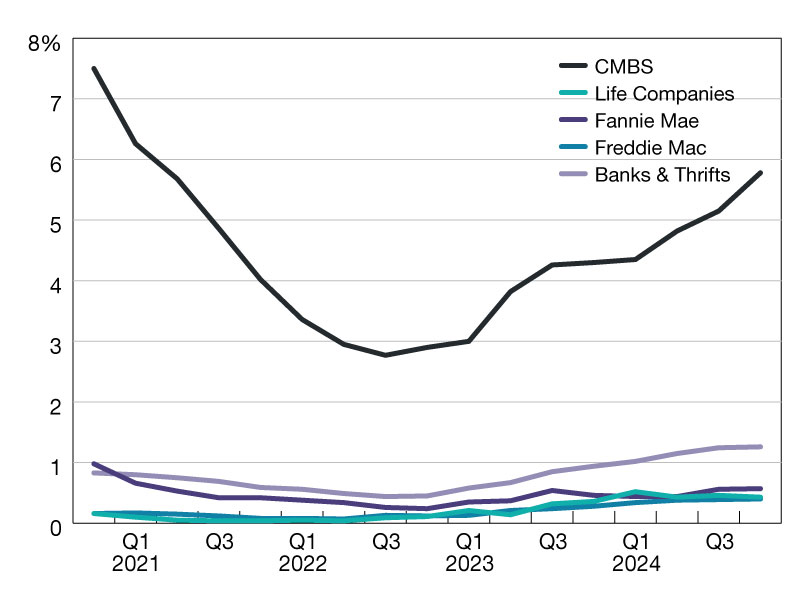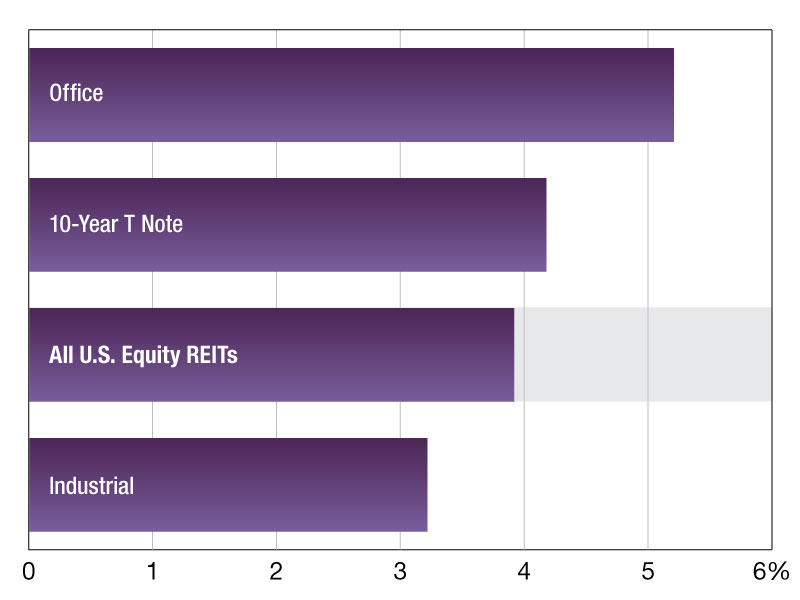Slowing Ahead
In this month’s Economist’s View, Hugh Kelly explains why you should prepare for a recession that’s likely coming in 2019.
By Hugh F. Kelly, PhD, CRE
In April 2018, the economy will mark 107 months since the end of the Great Recession. That would make it the second-longest expansion on record, surpassing the February 1961—December 1969 upcycle. The odds of reaching that milestone look very good right now. If growth were to continue until June 2019, the recovery would become the most durable in U.S. history, beating the March 1991—March 2001 boom.
Until recently, it looked like that record was within reach. Lately, however, the odds have weakened considerably, and it now seems prudent for commercial real estate investors to put plans in place to cope with a recession in about a year’s time.
Few forecasters are currently projecting such a downturn, and that’s part of the problem. Since the presidential election in November 2016, a spirit of ebullience has pervaded the equities markets. As John Kenneth Galbraith noted in A Short History of Financial Euphoria (1990), “all sensible people should circle the wagons” at such a time. No less eminent a figure than Alan Greenspan has reminded us that virtually all professional forecasters—including Greenpan himself—missed the warning signs of the Great Recession well into 2007, as the retired Fed chairman explained in the November-December 2013 issue of Foreign Affairs.
What are the symptoms of economic unease that we should be paying attention to this time around? There are at least five imbalances we should be monitoring with concern.
Let’s start with labor. Much has been made of the long decline of the unemployment rate to 4.1 percent, and the consensus forecast has that figure dropping just below 4 percent in 2018. But in the meantime, actual employment growth has decelerated from an annualized rate of more than three million in late 2014 and early 2015 to just 2.1 million since September 2017—a 30 percent slowdown, even taking January’s 200,000 monthly gain into account. That means employment is increasing at just 1.5 percent annually. It’s hard to continue forward momentum in the face of such a trend, and as I argued in the September 2017 issue, the Perdue/Cotton immigration bill favored by the White House exacerbates the situation, rather than improving it.
Homeowner Blues
We can next turn to the ramifications on housing of the Tax Cuts and Jobs Act passed and signed in December 2017. While supporters were indeed euphoric about the bill’s impact on after-tax corporate profits, and the breadth of the potential benefits for commercial real estate owners, the lack of public debate and non-partisan analysis hid many (perhaps) unintended consequences. Income tax changes, of course, disproportionately favor households in the top quintile, which can anticipate a 2.9 percent income boost, compared to an increase of just 0.4 percent in the bottom fifth.
More critically, however, tens of millions of homeowners are net losers because of the $10,000 cap on state and local tax deductions. If a homeowner has a mortgage of $300,000 or more, interest payments will likely exceed the cap, regardless of whether that homeowner lives in a jurisdiction with an income tax or significant property taxes. Remember that the homeownership rate in the U.S. was still 64.2% as of the fourth quarter of 2017, according to the U.S. Census Bureau.
The shudder in the stock market during the week of Jan. 30-Feb. 2—when the Dow Jones Industrial Average fell 4.0 percent (1,075 points), the S&P 500 gave up 4.4 percent and the NASDAQ slipped 3.3 percent—may, or may not, signal a shift in market direction. That will be clearer by the time you read this. But no matter whether the sharp midwinter drop reflects the start of a correction, concerns about the asset bubble in equities should be taken seriously. The 25.2 percent gain in the S&P 500 in a year when GDP growth was only one-tenth that level, and the elevation of the price/earnings ratio above 25X, can legitimately be viewed as “financial euphoria,” an unsustainable growth rate raising risks of unfulfilled expectations, in the year ahead.
Slippery Slope?
The fixed income markets have their own issues, expressed in the flattening yield curve. Now that Janet Yellen has passed the baton to the Fed’s new chairman, Jerome Powell, the base case for rate increases in 2018 appears to be a 75 basis-point rise in the discount rate, with the potential for an even steeper slope if wage gains (2.9 percent in the most recent tally by the BLS) trigger movement in the Consumer Price Index significantly beyond the Fed’s target 2 percent inflation rate.
The closer the short Treasury Bill rates approach the longer Treasury Note and Bond rates, the greater the recessionary signal. On February 1, 2018, the spread between three-month and ten-year Treasuries stood at 130 basis points. A year ago, that spread was 197 basis points. Four years ago it was 261 basis points, twice the current spread. Any further compression would signal heightened recessionary risk.
These are all very conventional economic indicators to watch. Beyond such ordinary measures, however, event risk also needs to be factored in. So-called “Black Swans” may be unpredictable in their specifics, but domestic and international political risk should not be underestimated today. The weakening of the dollar on international currency markets is, in part, an expression of nervousness about the outlook for the U.S. economy, anxiety that has been heightened by the expected $1 trillion increase in American sovereign debt implied by the Tax Act.
All things considered, it seems to be time to adopt a defensive strategy in commercial real estate. To some degree, that is already happening. Over the course of 2016 and 2017, transaction volume declined 13 percent, translating into $70 billion in reduced deal flow, according to Real Capital Analytics. In some ways, it seems that the real estate sector is ahead of the curve this time around.
—Hugh F. Kelly, PhD, CRE, is Special Advisor to the Fordham Real Estate Institute at Lincoln Center. He taught for more than 30 years at the NYU Schack Institute of Real Estate. Kelly served as the 2014 national chair of the Counselors of Real Estate. He is the author, most recently, of 24-Hour Cities: Real Investment Performance, Not Just Promises (Routledge, 2016).
You’ll find more on this topic in the March 2018 issue of CPE.









You must be logged in to post a comment.